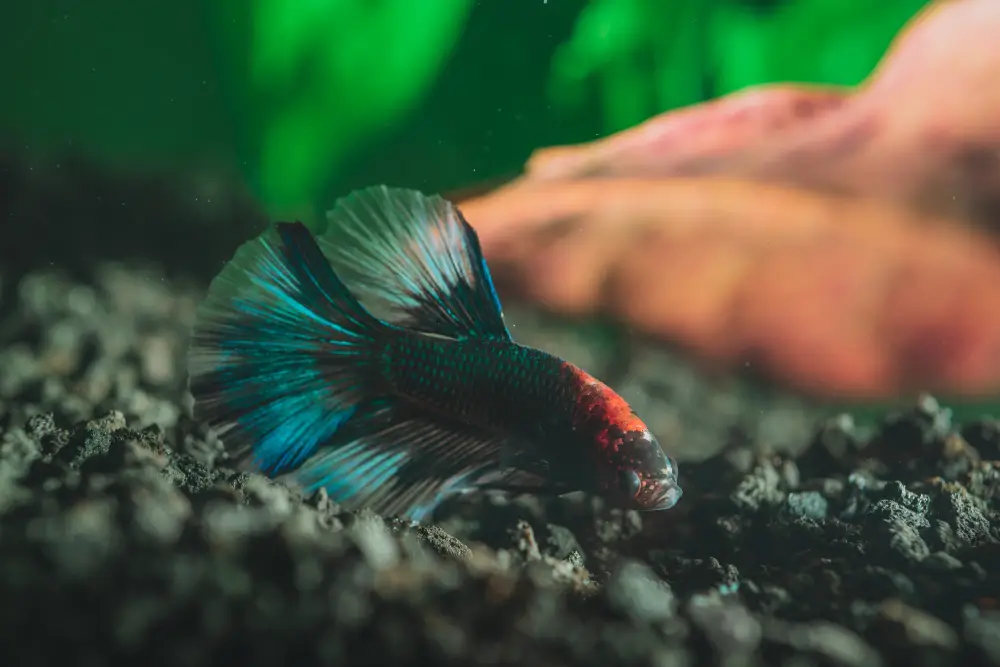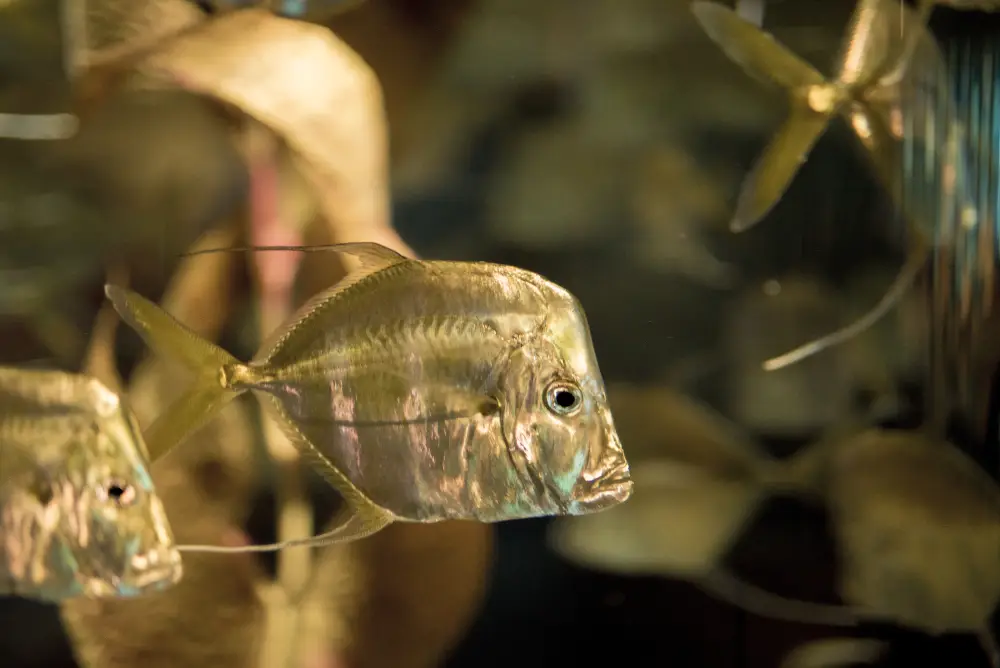

Catappa leaves are the dried leaves of the Terminalia catappa tree, native to tropical and subtropical regions. These leaves are a natural powerhouse, containing organic compounds like tannins, humic acids, and flavonoids that bring transformative benefits to aquariums.
When submerged in water, Catappa leaves release these compounds slowly, replicating the natural environment of rivers and streams where many tropical fish originate
Catappa leaves act as a natural water conditioner, reducing hardness and stabilizing pH. This is especially important for tanks with sensitive fish species that require specific water conditions.
The antifungal and antibacterial properties of the leaves create a healthier environment, reducing the risk of infections. They are particularly beneficial for bettas, discus, and tetras, which are prone to stress-related illnesses.
Catappa leaves are widely used by breeders as they provide an ideal environment for spawning. Fish like bettas and dwarf cichlids feel more comfortable laying eggs on or near the leaves.
Aquatic creatures like shrimp, snails, and catfish often forage on decomposing Catappa leaves. This encourages their natural feeding and hiding behaviors, reducing stress and improving overall activity levels.
By releasing tannins and reducing excess nutrients in the water, Catappa leaves can help control algae growth naturally, maintaining a cleaner tank.
The rustic, earthy tones of Catappa leaves add a natural look to your tank, making it more visually appealing while also benefiting its ecosystem
Some species particularly thrive with the addition of Catappa leaves in their habitat:
At Ceylontro, we prioritize quality and sustainability. Our Catappa leaves are:
Whether you’re an experienced aquarist or just starting, our premium-grade Catappa leaves are the perfect choice to enhance your aquarium.
Looking for the best Catappa leaves for your aquarium? Visit Ceylontro.com to explore our range of aquarium-friendly botanicals. We also offer detailed guides on using our products for optimal results.
Q1: Can I use Catappa leaves in any type of aquarium?
Yes! Catappa leaves are safe for freshwater tanks, shrimp tanks, and planted aquariums.
Q2: Will Catappa leaves turn my water brown?
Yes, the tannins released can give the water a tea-like appearance. This is a natural process and beneficial for the tank’s health.
Q3: How long do Catappa leaves last in a tank?
Depending on the water conditions and leaf size, they typically last 2-4 weeks.

Catappa leaves are a natural and cost-effective way to elevate your aquarium care. Their benefits range from improving water quality to enhancing the health and behavior of aquatic life. At Ceylontro, we’re committed to helping you create a thriving aquatic environment with our carefully sourced and processed Catappa leaves.
Explore the natural way to better aquarium health today. Visit Ceylontro.com to shop now!
“Excellence in Aquascaping: Meticulously Sourced Products for Beautiful, Healthy Aquariums at Every Skill Level.”
Enhance your space with our premium aquarium and terrarium products, beautifully crafted to bring the serene beauty of nature into your home.
Copyright © 2024 All Rights Reserved.
Below is a comprehensive table detailing our shipping rates for various countries and weight categories. These rates are designed to provide transparent and competitive pricing for all our customers. Note that the rates listed are inclusive of the fuel surcharge and are subject to the terms and conditions outlined above.
Above 70 Kgs – Below Rate to be Multiplied by the Number of Kg’s
Belly pods, from the Aegle marmelos tree, are used in aquariums to release beneficial compounds, similar to Indian almond leaves. They are beneficial for fish such as bettas, angelfish, discus, and tetras, providing natural antibacterial properties and creating a healthy aquatic environment.

Indian almond leaves (catappa leaves) and jackfruit leaves are beneficial for betta fish in aquariums. Indian almond leaves release tannins with antibacterial and antifungal properties, helping to maintain water quality, lower pH levels naturally, and reduce stress. Jackfruit leaves also release tannins, conditioning water and creating a natural environment that supports betta fish health and well-being.